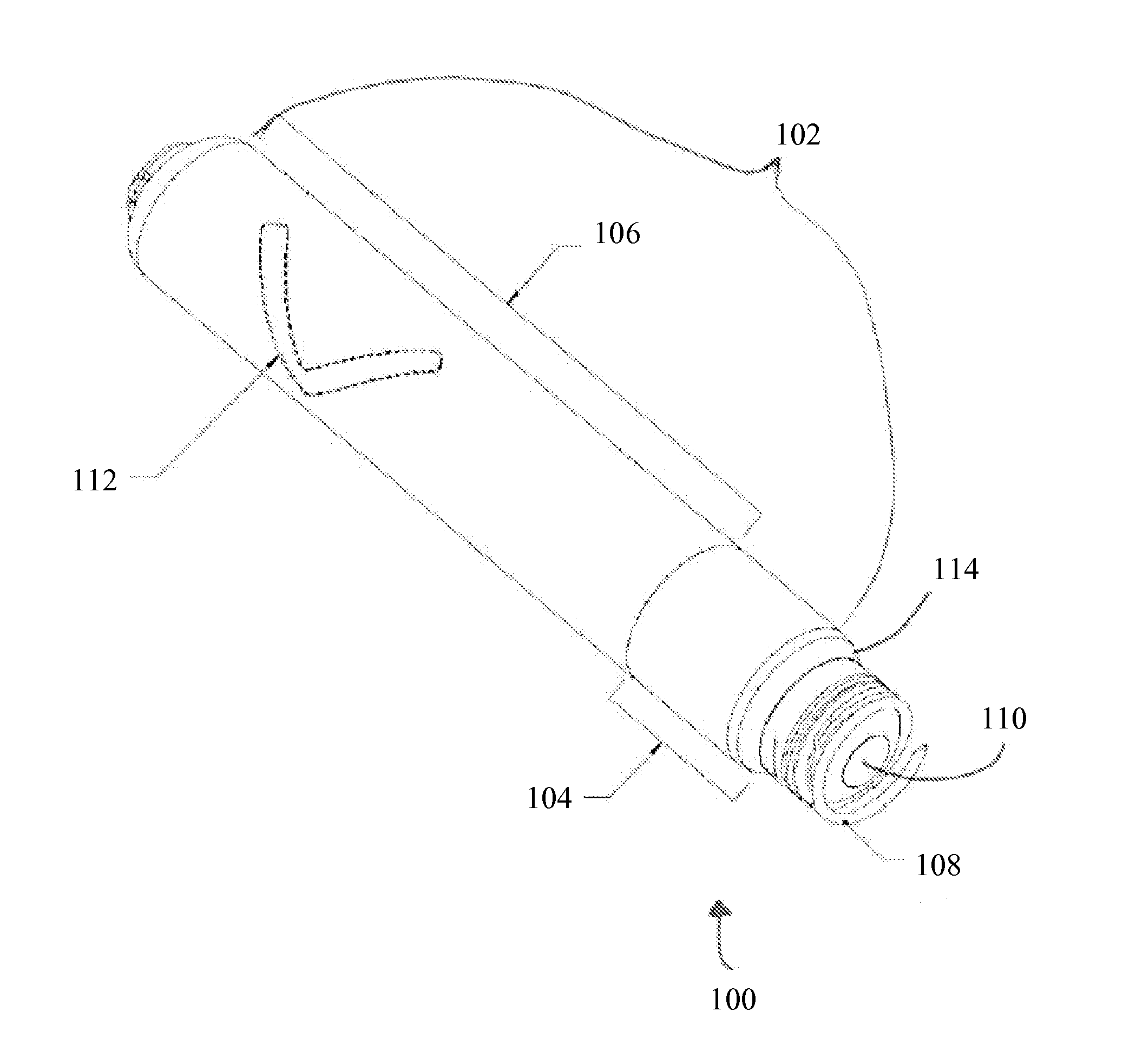X-Ray Identification for Active Implantable Medical Device
a medical device and active technology, applied in the field can solve the problems of more difficult to find acceptable locations and more difficult to radiograph the identification of implantable medical devices
- Summary
- Abstract
- Description
- Claims
- Application Information
AI Technical Summary
Benefits of technology
Problems solved by technology
Method used
Image
Examples
Embodiment Construction
[0035]Technological advances have allowed for a reduction in the size of active implantable medical devices. Decreasing the size of the implantable medical devices has made it more challenging to find acceptable locations for placing radiographic markers or tags on the active medical device. Radiographic visualization of the implantable medical device can be more difficult because of limits with conventional X-ray machines and the orientation of the body of the patient with respect to conventional X-ray machines.
[0036]Active implantable medical devices typically have an electronics compartment and a cell. The radiographic or radio-opaque marker or tag is usually placed inside the electronics compartment. However, the electronics compartment has radio-opaque components such as tantalum capacitors. The radio-opaque tag or marker can be shadowed, obscured, or confused with the neighboring radio-opaque materials using conventional fluoroscopy methods. The components of the electronics c...
PUM
 Login to View More
Login to View More Abstract
Description
Claims
Application Information
 Login to View More
Login to View More - R&D
- Intellectual Property
- Life Sciences
- Materials
- Tech Scout
- Unparalleled Data Quality
- Higher Quality Content
- 60% Fewer Hallucinations
Browse by: Latest US Patents, China's latest patents, Technical Efficacy Thesaurus, Application Domain, Technology Topic, Popular Technical Reports.
© 2025 PatSnap. All rights reserved.Legal|Privacy policy|Modern Slavery Act Transparency Statement|Sitemap|About US| Contact US: help@patsnap.com



